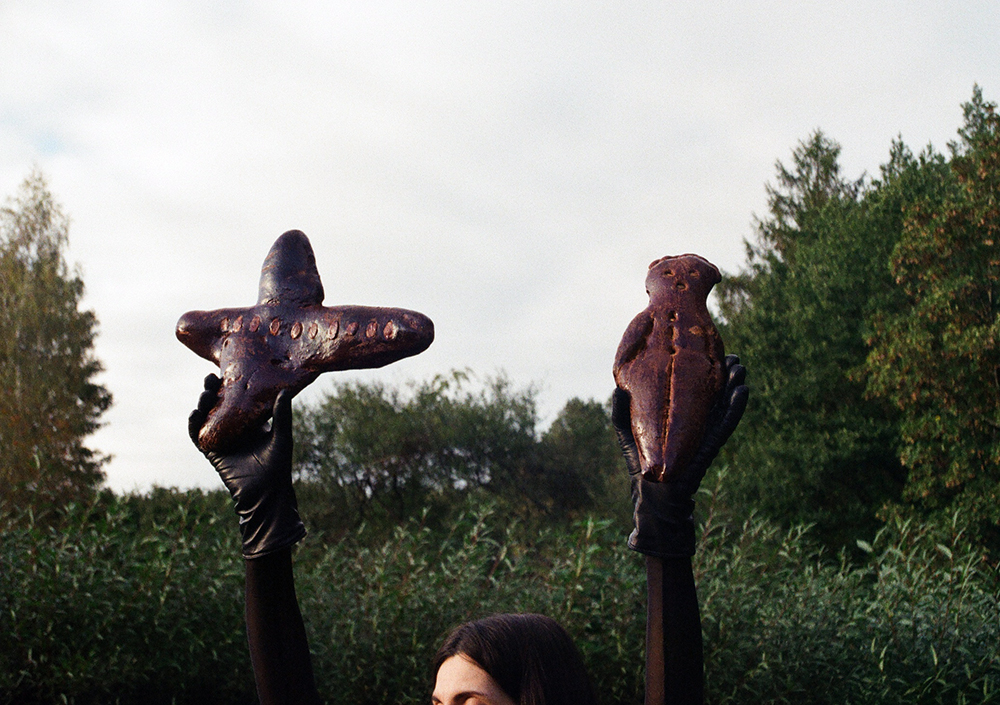
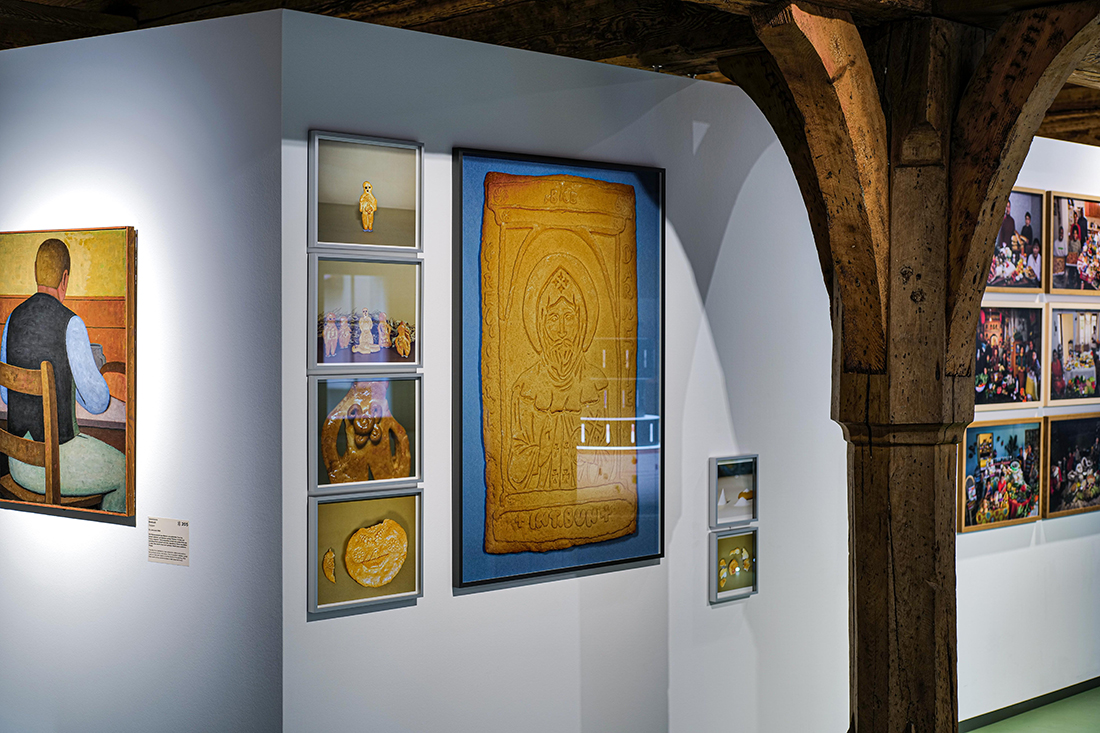
.jpeg) Installation view, Restoring From a Void. Excavation Sites and Magic Cities, Škuc Gallery, Ljubljana, 2024
Installation view, Restoring From a Void. Excavation Sites and Magic Cities, Škuc Gallery, Ljubljana, 2024
.jpeg)
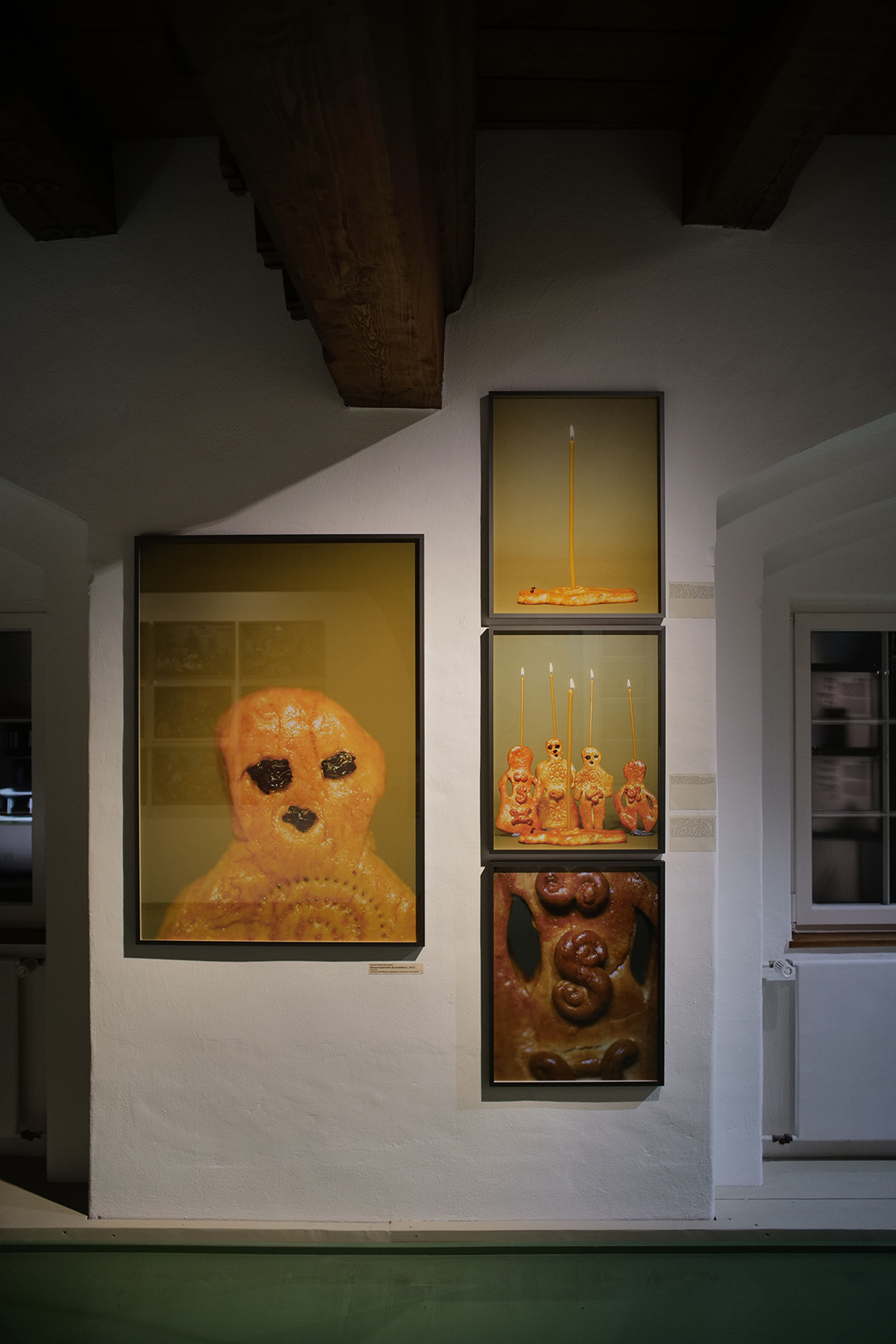
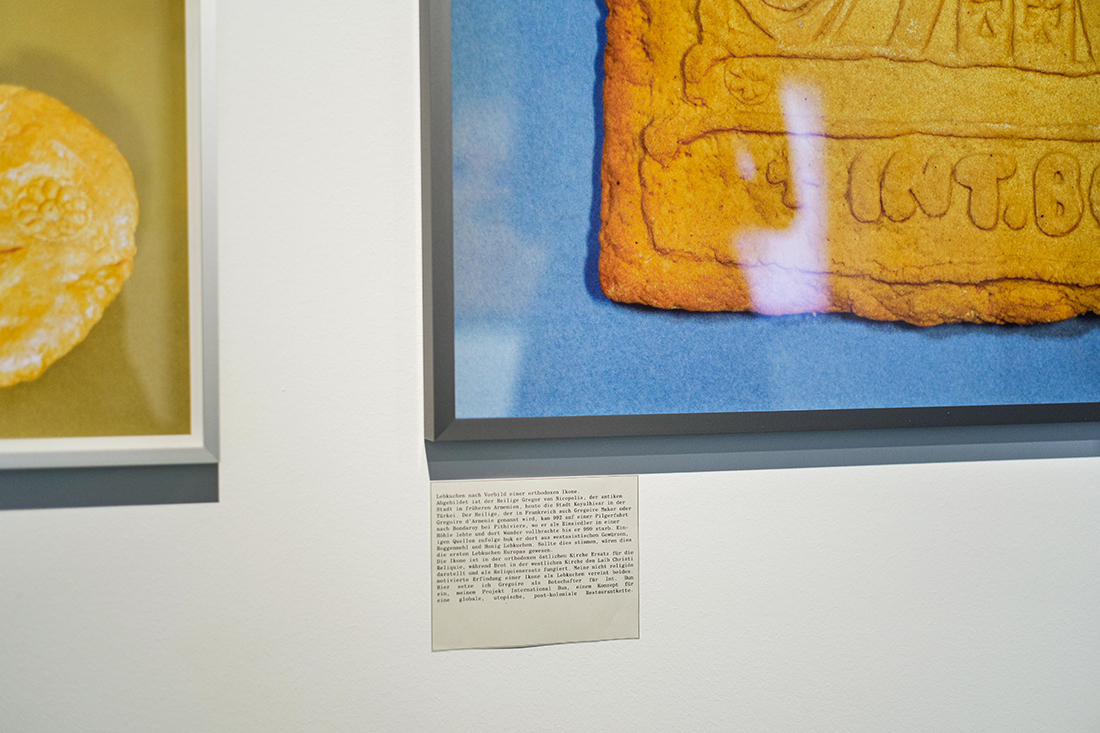
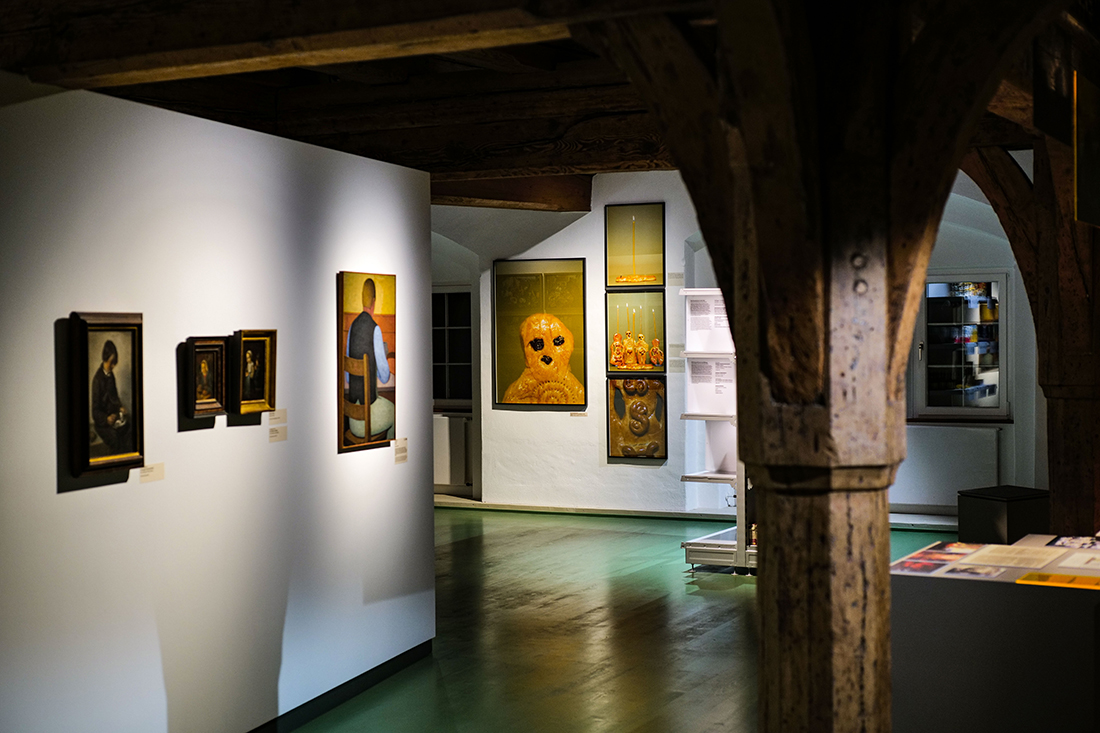
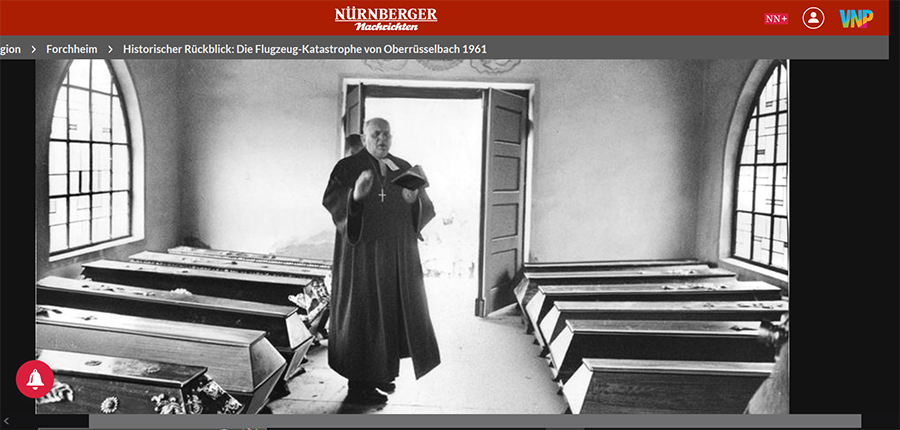
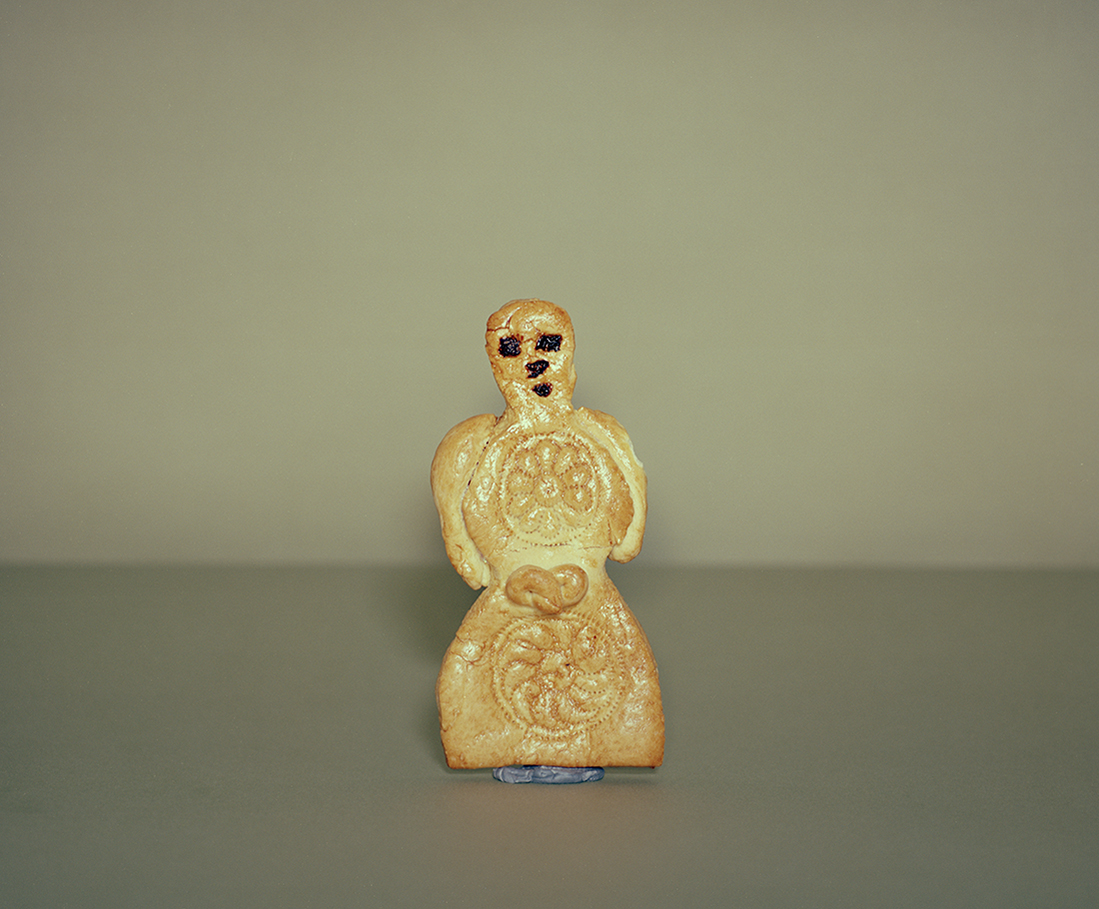
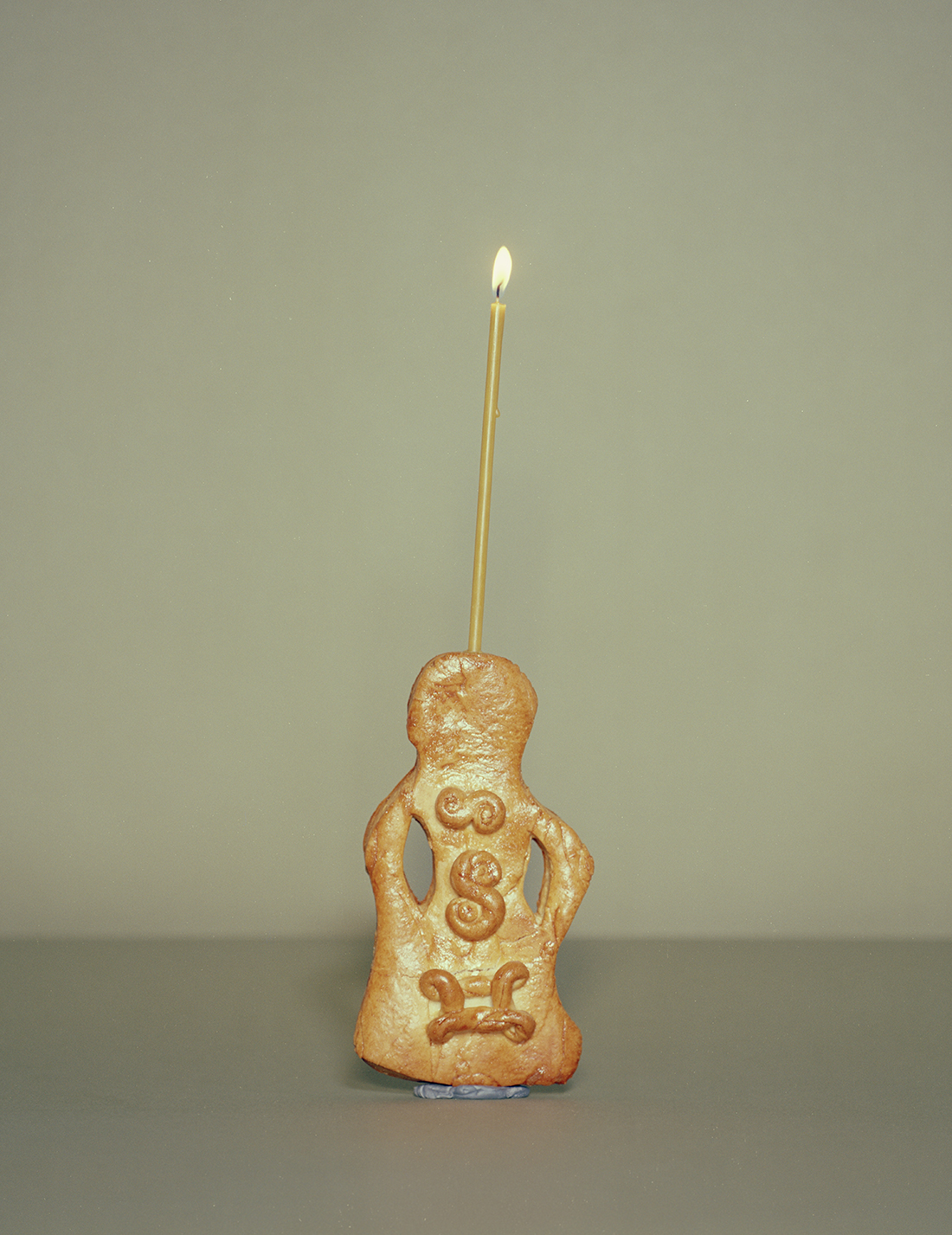
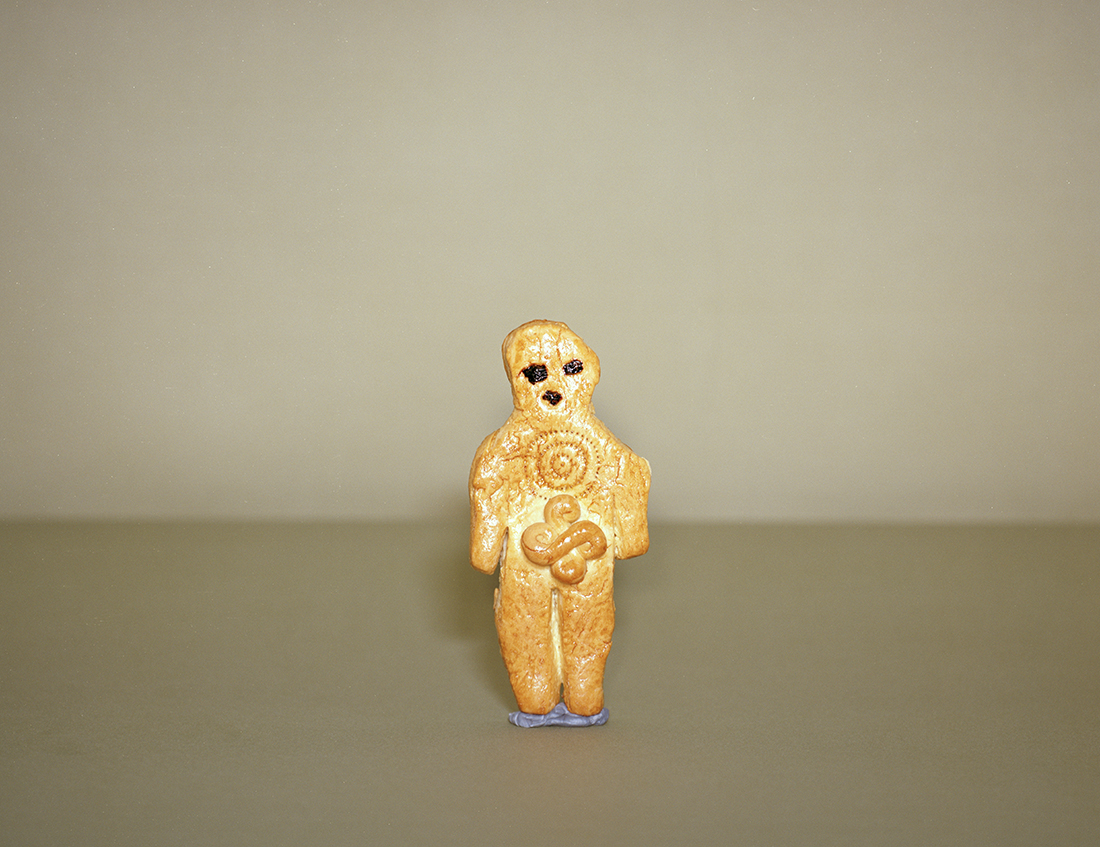
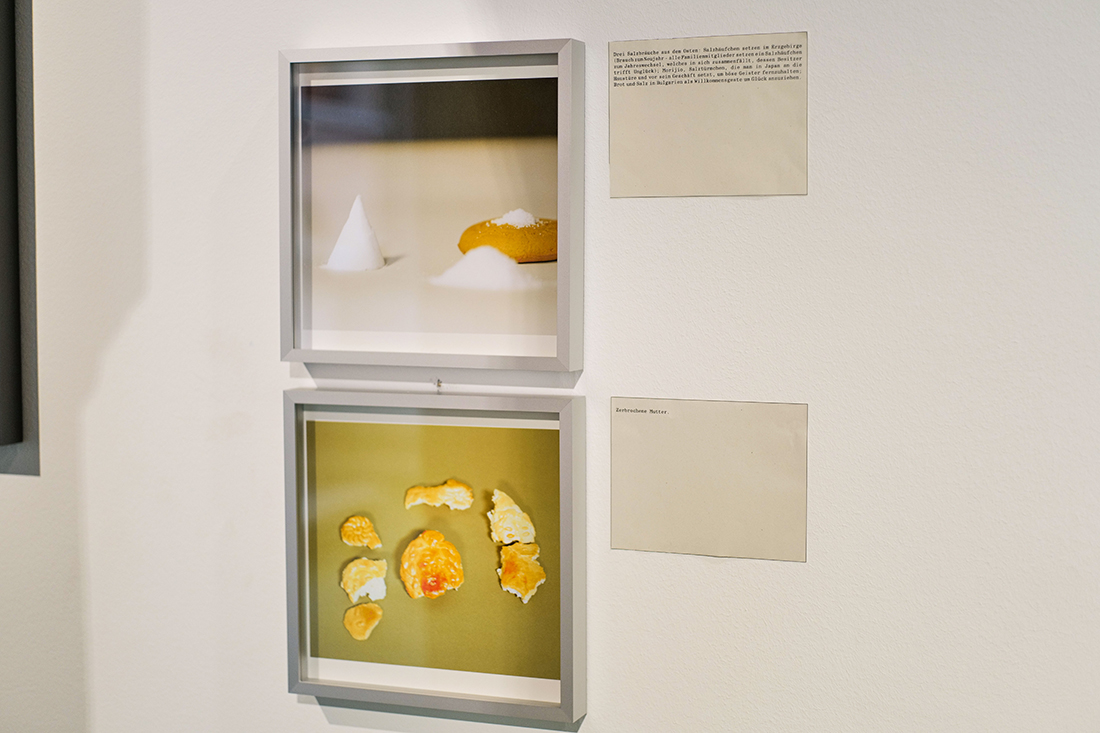
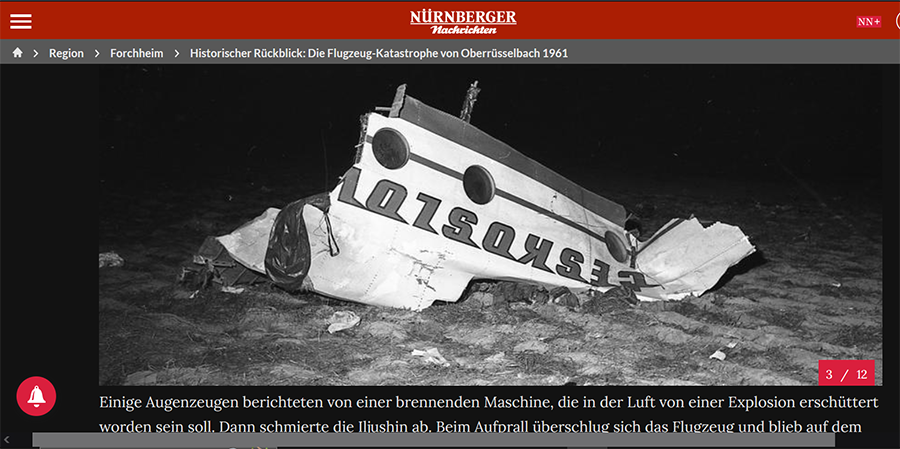
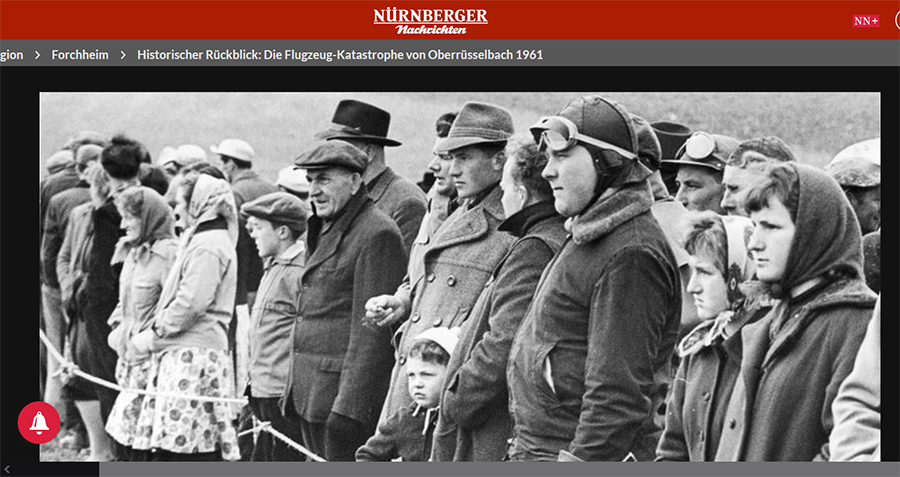
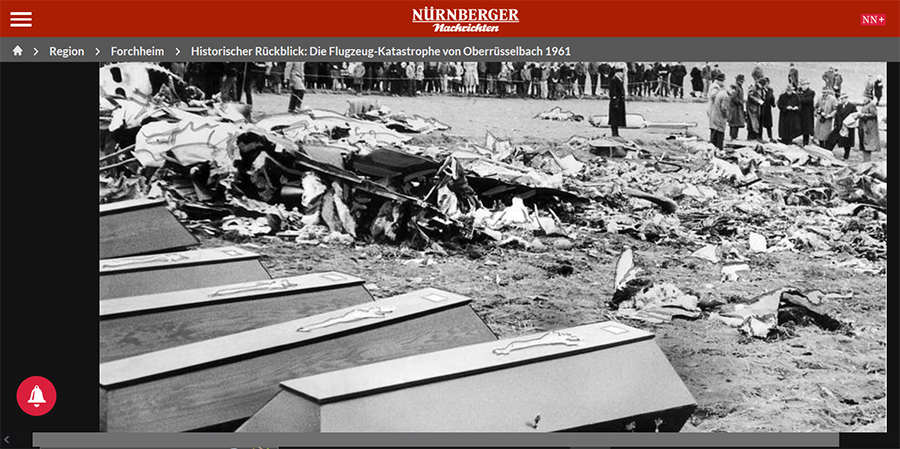
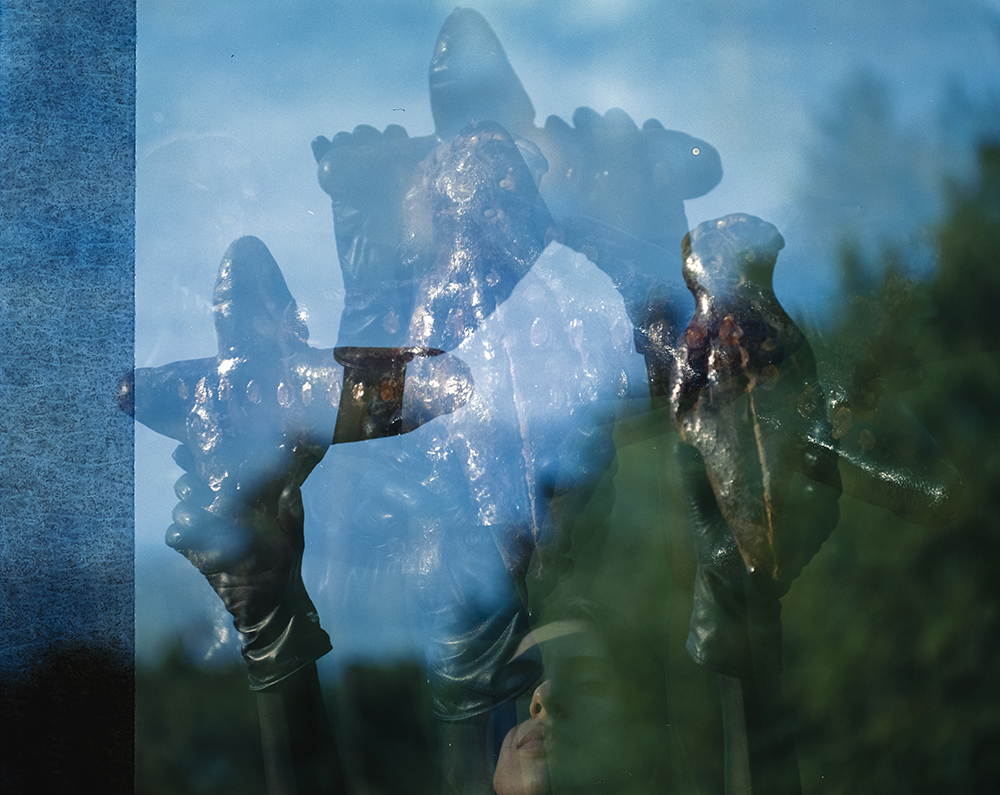
.jpg) Ritual breads and gata cakes with motifs. Hand, container ships with wheat, the Cyrillic letter b, the Japanese chrysanthemum and the West Asian sun symbol, knots that bring good luck.
Ritual breads and gata cakes with motifs. Hand, container ships with wheat, the Cyrillic letter b, the Japanese chrysanthemum and the West Asian sun symbol, knots that bring good luck.
.jpg)
.jpg) Broken Mother.
Broken Mother.
.jpg) Portrait of Eprad, grandfather.
Died in plane that crashed on an empty field near Nuremberg in 1961. He departed as a member of the military from Prague and was supposed to land in Bamako. There is a funeral held in his home country in Sofia. Only stones are placed in the coffin that is buried. Eprad’s daughter, Viktoria, Beatrice’s mother, is 6 years old. Eprad’s mother, also called Viktoria, believes until her death that he had survived the crash. A newspaper article from 2021 states that the identities of two of the dead were prohibited from being disclosed.
Portrait of Eprad, grandfather.
Died in plane that crashed on an empty field near Nuremberg in 1961. He departed as a member of the military from Prague and was supposed to land in Bamako. There is a funeral held in his home country in Sofia. Only stones are placed in the coffin that is buried. Eprad’s daughter, Viktoria, Beatrice’s mother, is 6 years old. Eprad’s mother, also called Viktoria, believes until her death that he had survived the crash. A newspaper article from 2021 states that the identities of two of the dead were prohibited from being disclosed.
.jpg) Gingerbread modeled after an Orthodox icon.
The icon is a substitute for the relic in the Orthodox Eastern Church, while bread represents the body of Christ in the Western Church and acts as a substitute for relics. My non-religiously motivated invention of an edible icon combines both.
Depicted is Saint Gregoroire of Nicopolis, the ancient city in former Armenia, now the city of Koyulhisar in Turkey. The saint, also called Gregoire Makar or Gregoire d’Armenie in France, arrived on a pilgrimage in Bondaroy near Pithiviers in 992, where he lived as a hermit in a cave and performed miracles there until he died in 999. According to some sources, he baked gingerbread with West Asian spices from his homecountry, rye flour and honey. If this is true, these would have been the first gingerbreads in Europe.
Here I use Gregoire as an ambassador for Int. Bun, my project International Bun, a concept for a global, utopian, post-colonial restaurant chain.
Gingerbread modeled after an Orthodox icon.
The icon is a substitute for the relic in the Orthodox Eastern Church, while bread represents the body of Christ in the Western Church and acts as a substitute for relics. My non-religiously motivated invention of an edible icon combines both.
Depicted is Saint Gregoroire of Nicopolis, the ancient city in former Armenia, now the city of Koyulhisar in Turkey. The saint, also called Gregoire Makar or Gregoire d’Armenie in France, arrived on a pilgrimage in Bondaroy near Pithiviers in 992, where he lived as a hermit in a cave and performed miracles there until he died in 999. According to some sources, he baked gingerbread with West Asian spices from his homecountry, rye flour and honey. If this is true, these would have been the first gingerbreads in Europe.
Here I use Gregoire as an ambassador for Int. Bun, my project International Bun, a concept for a global, utopian, post-colonial restaurant chain.
.jpg) Three salt customs from the East: placing salt heaps (“Salzhäufchen setzen”) in the Ore Mountains (custom at New Year - all family members set a salt heap at the turn of the year, which collapses, its owner meets with misfortune); Morijio, salt towers, which people in Japan put on their front door and in front of their store to keep away evil spirits; bread and salt in Bulgaria as a welcome gesture to attract good luck.
Three salt customs from the East: placing salt heaps (“Salzhäufchen setzen”) in the Ore Mountains (custom at New Year - all family members set a salt heap at the turn of the year, which collapses, its owner meets with misfortune); Morijio, salt towers, which people in Japan put on their front door and in front of their store to keep away evil spirits; bread and salt in Bulgaria as a welcome gesture to attract good luck.
.jpg) Portraits of Eprad, born in Sofia, died near Nuremberg in 1961; Beatrice, 1934-2022, born in Varna, married in Sofia, buried in Varna; Krikor, 1907-1980, fled Ottoman Empire from genocide as a ten year old, died in Varna; Viktoria, fled Ottoman Empire as a young teenager with future husband Sarkis who is adopted by her family; Sarkis sees his in-laws slaughtered; died in Sofia. Marie, great-grand aunt, died in a deportation or extermination camp filled with minorities who were herded through the desert until they were dead. Uncle Karen writes, “Marie was very young, she was hungry and dug up a turnip in the ground, a Turkish soldier took it from her hand and beat her to death with it.” Officers of the German Empire, ally to the Ottoman Empire, helped to answer the Armenian Question.
Portraits of Eprad, born in Sofia, died near Nuremberg in 1961; Beatrice, 1934-2022, born in Varna, married in Sofia, buried in Varna; Krikor, 1907-1980, fled Ottoman Empire from genocide as a ten year old, died in Varna; Viktoria, fled Ottoman Empire as a young teenager with future husband Sarkis who is adopted by her family; Sarkis sees his in-laws slaughtered; died in Sofia. Marie, great-grand aunt, died in a deportation or extermination camp filled with minorities who were herded through the desert until they were dead. Uncle Karen writes, “Marie was very young, she was hungry and dug up a turnip in the ground, a Turkish soldier took it from her hand and beat her to death with it.” Officers of the German Empire, ally to the Ottoman Empire, helped to answer the Armenian Question.
.jpg) Eprad.
Eprad.
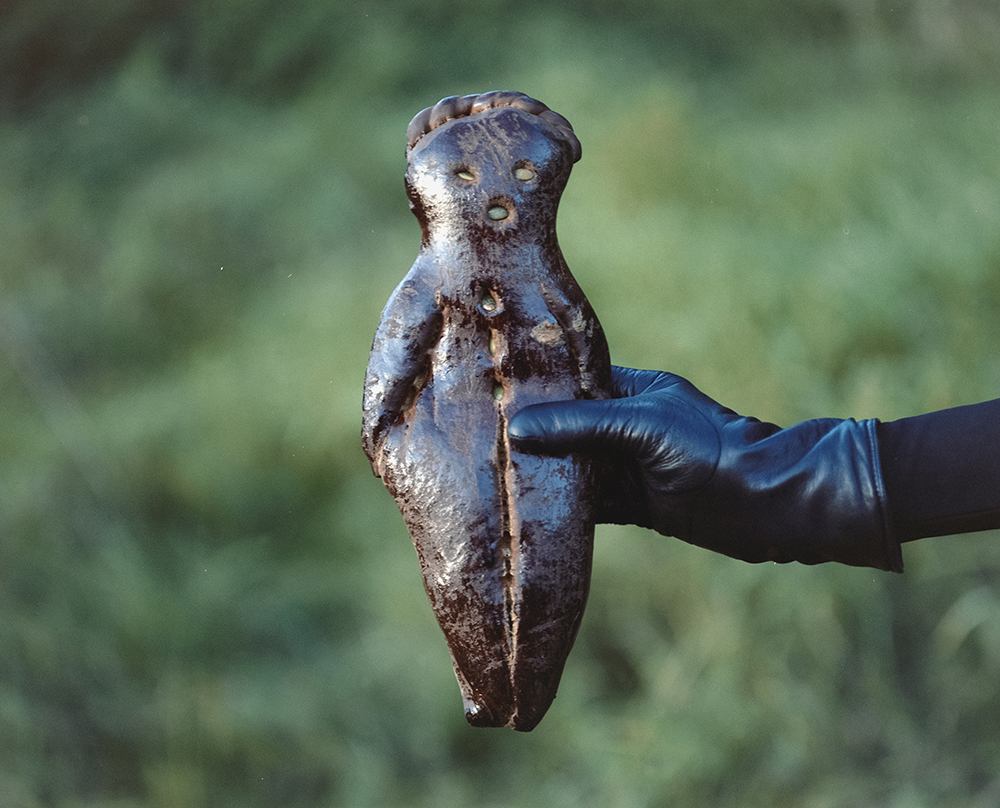
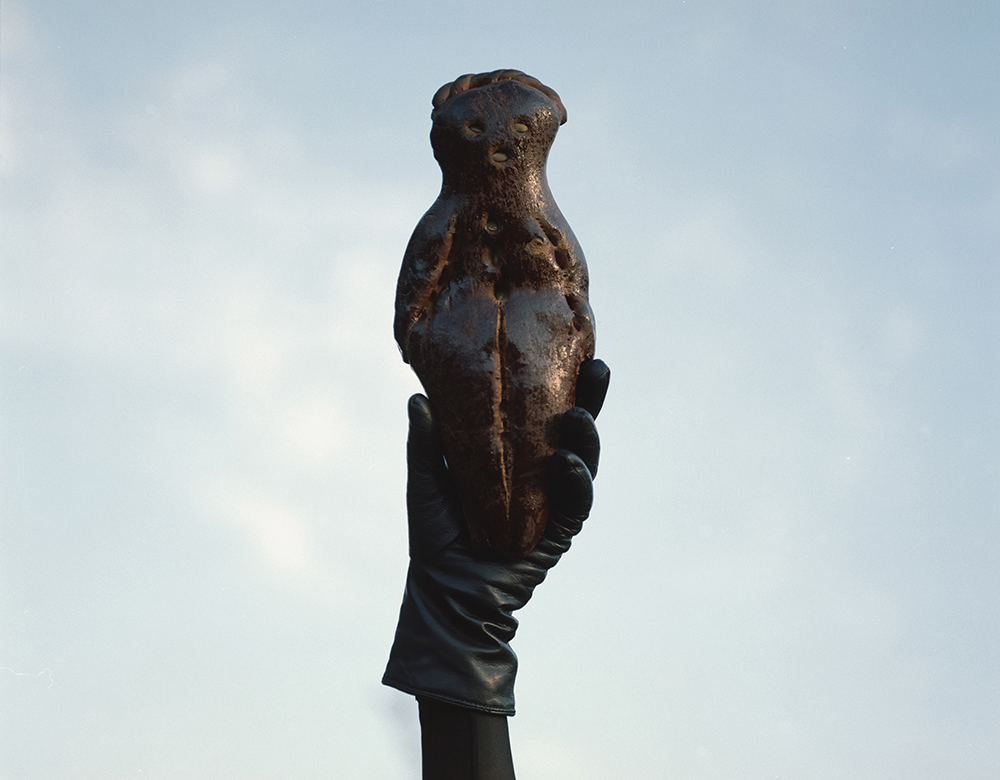
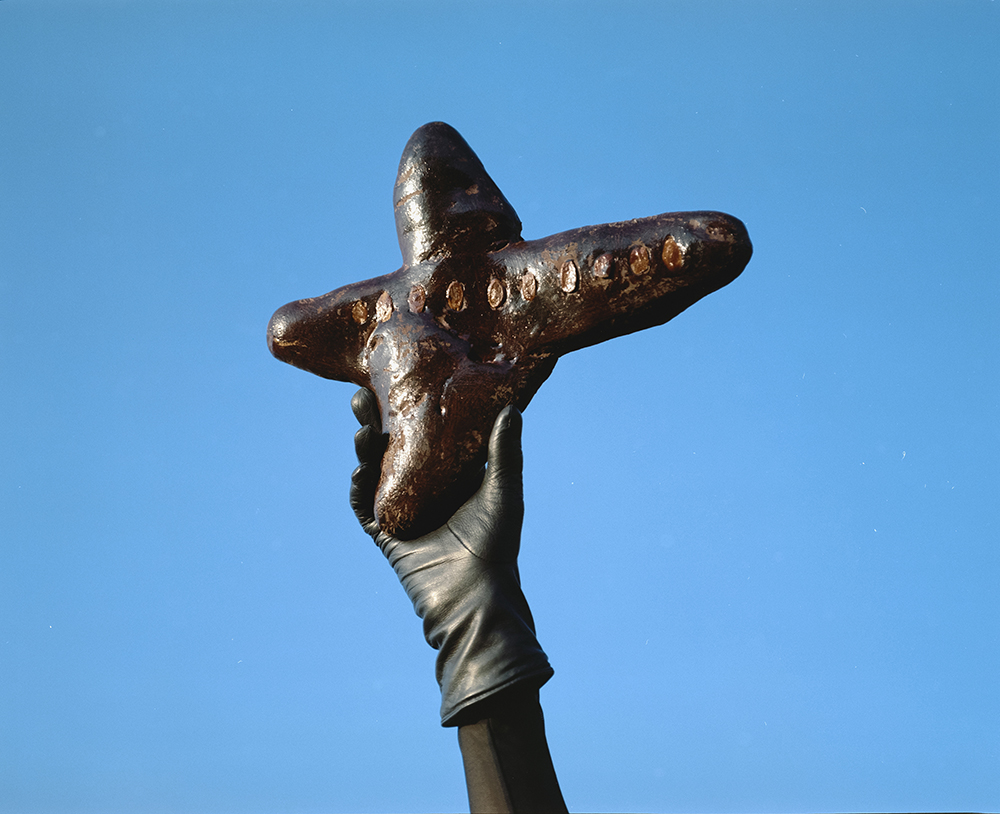
.jpg)
.jpg)
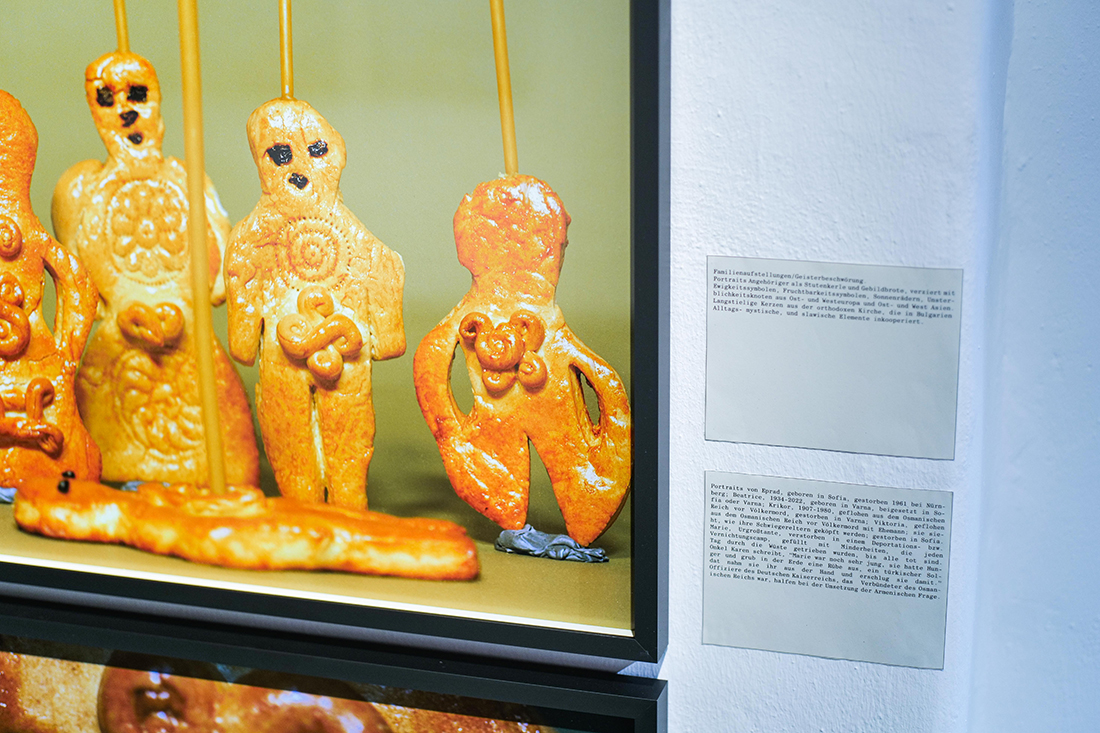
DEUTSCH
Mit-inspiriert von der Stadt Ulm, welche, an der Donau liegend, historische Verbindungen mit Osteuropa und West Asien aufweist, habe ich auf Grundlage des Vermischens und Kombinierens verschiedener slawischer, mitteleuropäischer und westasiatischer Rezepte für Opfer- und Gebildbrote Gebäckstücke kreiert und familienbiographisch interpretiert. Die Porträtierten sind meine größtenteils toten Verwandten in einer Art therapeutischem esoterischem Psychodrama (“Familienaufstellung”).
Eines der Rezepte ist dem “Weckmann”, “Stutenkerl” oder “Klausenmann” entlehnt, einem zum Figürchen geformten Hefeteig, der seit Jahrhunderten an verschiedenen Orten zu jeweils unterschiedlichen Anlässen im Laufe des Jahres hergestellt wird. Ein weiteres Rezept beruht auf Gata, einem einfachen runden armenischen Brot, das in verschiedenen Größen hergestellt wird, ein wenig wie französische Galette schmeckt und manchmal mit Glück- oder Segenswünschen verziert wird. Auch Teig für bulgarische Osterbrote habe ich hergestellt, und als Personen gestaltet.
Neben orthodoxen Kerzen sind auch die Symbole, die ich für die Verzierung der Personen gewählt habe, alt und doch auch neu kodiert. Symbole wie das Ewigkeitsrad, Fruchtbarkeitssymbole, oder die Brezelform, tauchen auf dem gesamten euro-asiatischen Kontinent in unterschiedlichen Varianten auf, und verweisen mehr oder weniger auf die gleichen Bedeutungen.
Während einer Residenz von Fundacja Ziemniaki i in Warmia in Polen habe ich mich beim Teig an einem Rezept für Kołacz Ormian kuckich orientiert, eine Art süßliches Brot das von armenischen Polen in Kuty, einer Stadt in der heutigen Ukraine, gebacken wird. Diese Version wird anders als die polnische Variante mit Safran, Vanille und anderen orientalischen Gewürzen verfeinert und zeichnet sich durch einen hohen Anteil an Eigelb aus. Interessanterweise wurde das Gericht in das polnische Verzeichnis der traditionellen Nationalgerichte aufgenommen. Die Gespräche, die ich während des Aufenthalts führte, verorteten für mich das Projekt und die Themen, die mich interessieren (private Familienbiografie in sozio-politischen Umbrüchen) in Godki.
Ich habe den ČSA Flug 511 gebacken, der am 28. März 1961 mit meinem Großvater Eprad Moumdjian an Bord in der Nähe von Nürnberg, Westdeutschland, abgestürzt ist. Eprad Moumdjian war zu diesem Zeitpunkt unter Vetrag der bulgarischen Armee im unteren Dienstgrad. Er stieg in Prag in das Flugzeug der neu gegründeten internationalen Verbindung, die über westliches Territorium flog, und auf dem Weg nach Bamako war. Das Flugzeug war mit Beamten und ein paar Diplomaten besetzt. Ich habe Zeitungsartikel aus Deutschland und der Tschechischen Republik gesammelt und 2024 Kontakt mit der Forscherin Tereza Šírová aufgenommen, die ihre Dissertation über ungeklärte Flugzeugabstürze in der ehemaligen Tschechoslowakei geschrieben hat. Nach Šírovás Einschätzung handelt es sich um einen immer noch mysteriösen Absturz. Mehrere Nationen, von denen die meisten nicht mehr existieren, und auch die USA, waren offiziell und inoffiziell an den Ermittlungen beteiligt.
Ursprünglich hatte der Kołacz Ormian kuckich die Form eines hoch aufgegangenen Rechtecks, das an der Oberfläche dunkel und innen weich und gelb ist. Ich habe stattdessen kleinere Formen gemacht und die Außenseite fast verbrannt, passend zum Thema.
ENGLISH
Partly inspired by the city of Ulm, which lies on the Danube river and has historical connections with Eastern Europe, I created pastries based on the mixing and combining of various Slavic, middle European and West Asian recipes for sacrificial and symbol breads and interpreted them biographically. The portraits are intended to represent my relatives in a sort of therapeutic esoteric psychodrama (“family constellation”).
One of the recipes is based on the “Weckmann”, “Stutenkerl” or “Klausenmann”, a yeast dough shaped into a little figure that has been made for centuries in different towns and villages on different occasions throughout the year. Another recipe is based on gata, a simple round Armenian bread that is made in different sizes, tastes a bit like a French galette and is sometimes decorated with wishes for good luck or blessings. I also made dough for Bulgarian Easter breads and used it to create people from it.
Besides Orthodox candles, the symbols I chose to decorate the breads are old and yet also newly coded. Symbols such as the eternity wheel, fertility symbols, or the pretzel shape, appear in different variations throughout the Asian continent, and refer more or less to the same meanings.
During a residency by Fundacja Ziemniaki i in Warmia in Poland I followed a dough recipe for Kołacz Ormian kuckich, a type of bread baked by Armenian poles in Kuty, a town located in today’s Ukraine. This version, unlike the Polish type, is refined with Safran, Vanilla and other eastern spices and characterized by a large quantity of egg yolks. Interestingly, the dish was put on the Polish registry of national traditional foods. The talks I had at the residency put this into perspective and for me situated the project and the themes I’m interested in (private family biography in socio-political turmoil) in Godki.
Ich baked ČSA Flight 511 that crashed with my grandfather Eprad Moumdjian onboard on March 28 in 1961 near Nuremberg, West Germany. Eprad was at that point a lower tier contractual military member of the Bulgarian army. He boarded the plane that was enroute to Bamako in Prague, on a new-ishly established international connection flying over Western territory. It was filled with official personnel and a few diplomats. I’ve been collecting newspaper articles from Germany and the Czech Republic and this year contacted researcher Tereza Šírová who has published her dissertation about unresolved plane crashed in the former Czechoslovakia. This is in her estimation a still mysterious crash. Several nations, most of which since seized to exist, as well as the US, were involved officially and unofficially in the investigation.
Originally the cake’s is shaped like a high risen square, darkened on its surface, soft and yellow on the inside. I instead made smaller shapes and nearly burnt the outside, fitting to the theme.
Exhibitions
2024 Beatrice Moumdjian: Restoring From a Void. Excavation Sites and Magic Cities, World of Art School for Curatorial Practices and Critical Writing. Škuc Gallery. Ljubljana, SI
2022 Kunstsaaten. Museum Brot und Kunst. Ulm, DE
Press
2024 Delo. 30.05.2024. Nina Skumavc. Beatrice Moumdjian: Obnova praznine. Najdišča in čarobna mesta. Ljubljana, SI
2024 RTV SLO. 10.05.2024. Tina Poglajen. Radio piece RTV SLO. Ljubljana, SI
.Compare also this work and that work and this one for reference
.Screencaptured article linked here
.Exhibition text about the work
.Article about the CSA plane crashby Czech researcher Tereza Sirova
.With thanks to Culture Moves Europe who funded my stay in Ljubljana through the program individual residency action, as well as Fundacja Ziemniaki i, whose residency 'The Body Folkloric' was funded by Culture Moves Europe and Goethe Institut.
